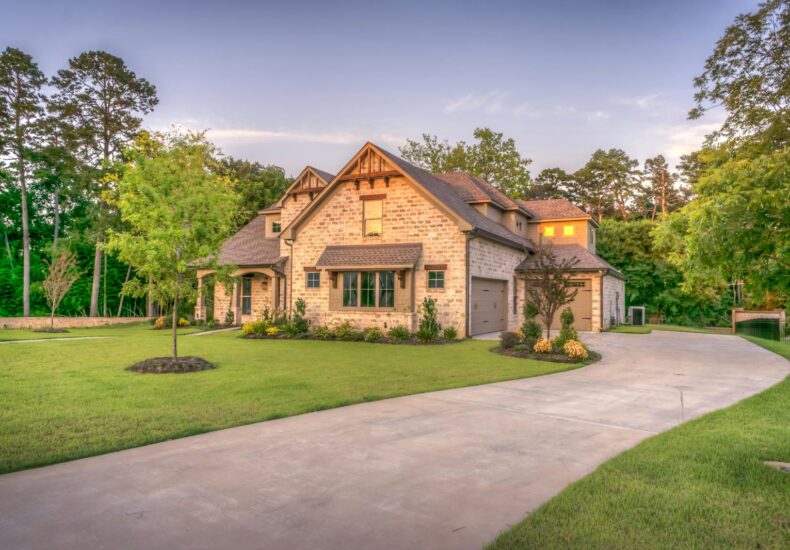
The Impact of Remote Work on Real Estate Trends
Remote work has irrevocably altered how we live and where we choose to live. Gone are the days of everyone needing to be in the same office building downtown. This shift has rippled through the real estate market, creating fascinating new trends that are reshaping cities, suburbs, and the very concept of homeownership. Let’s take a closer look at how this work-from-home revolution is impacting our real estate landscape.
Remote Work’s Effect on Cities
Cities are grappling with the consequences of reduced daily commutes. Downtown areas, once bustling with office workers, now face a different kind of challenge. Retail spaces are struggling to adapt to a reduced foot traffic, and some businesses are relocating to areas with more residential density. The vibrant energy that once defined these urban hubs is slowly morphing, requiring a rethinking of urban planning and infrastructure. This isn’t necessarily a bad thing; smaller, more intimate businesses are finding a foothold in these areas, creating a unique blend of retail and residential spaces. The pressure on high-priced downtown apartments is also easing, potentially opening opportunities for more diverse demographics.
Empty office buildings present a significant opportunity. Developers are exploring creative reuse strategies, transforming them into mixed-use spaces, apartments, and even co-working spaces. The evolution of these urban spaces is ongoing, and the future is likely to be quite different from the past. The emergence of “live-work-play” communities is becoming more common, catering to those who want to minimize their commute and maximize their lifestyle. Cities are realizing they need to adapt to attract and retain the new type of worker.
However, the loss of office-based employment isn’t without its downsides. The reduction in tax revenue from these companies is impacting city budgets and potentially increasing the burden on residential property taxes. Cities are therefore looking to find new revenue streams and ways to adapt to this new reality.
Suburban Sprawl Gets a Makeover
The suburbs, once the epitome of the American dream, are experiencing a renaissance fueled by remote work. Families are seeking more space, better schools, and quieter environments away from the hustle and bustle of city life. This demand is driving up the price of suburban homes, particularly in areas with desirable amenities and access to nature. Homes with spacious yards, home offices, and flexible floor plans are in high demand, reflecting the need for adaptable living spaces.
Suburban communities are responding by updating infrastructure to support the new wave of residents. New parks, community centers, and improved transportation options are emerging, attracting families looking for a blend of urban amenities and suburban tranquility. The shift from strict commutes to flexible work schedules is fostering a sense of community, with suburbs seeing a surge in local businesses and events. It’s no longer just about escaping the city; it’s about embracing a new type of suburban lifestyle.
Yet, this suburban boom isn’t without its challenges. The increased demand puts pressure on housing affordability, potentially creating a divide between those who can afford the premium suburban lifestyle and those who can’t. The need for more robust infrastructure and public services in these rapidly changing areas is also being highlighted, creating a need for proactive planning and investment.
The Future of Real Estate is Hybrid
The future of real estate isn’t about choosing between city and suburb; it’s about embracing a hybrid approach. Remote workers are increasingly seeking properties that offer a blend of both urban and suburban benefits. This has led to the rise of townhomes, smaller houses, or even smaller apartments located in mixed-use developments that offer access to both city amenities and suburban tranquility. Accessibility to public transport, green spaces, and local amenities are becoming increasingly important factors.
This hybrid approach also impacts the concept of a “home.” The need for multiple spaces within the home to accommodate both work and relaxation is becoming a key feature. Home offices are being integrated into homes in more creative ways, demonstrating a shift in the way we use and design our living spaces. More emphasis is placed on flexibility and adaptability, with homes designed to support various needs and lifestyles.
The transition to a hybrid work environment is driving innovation in property management. Rental properties, for instance, are being marketed to attract remote workers with amenities such as high-speed internet, co-working spaces within the complex, and other features that enhance the living experience. The future of real estate is about adapting to the fluidity of the modern worker, creating spaces that cater to both work and leisure.
The impact of remote work on real estate trends is profound and multifaceted. From the revitalization of urban centers to the evolution of suburban living, the landscape is changing. Ultimately, the future of real estate hinges on understanding and adapting to the evolving needs of the modern workforce. This means embracing hybrid approaches, understanding the balance between work and life, and recognizing that the home is more than just a place to live, but a place to thrive.
You may also like
Search
Categories
Latest Posts
- Can AI Be Creative? Exploring AI in Art and Music
- The Ultimate Guide to Composting: Turning Kitchen Scraps into Garden Gold
- The Ultimate Guide to Growing Tomatoes: from Seed to Harvest
- Exploring the Wonders of Southeast Asia: A Cultural Journey
- The Art of Public Speaking: Overcoming Fear and Delivering Confident Presentations